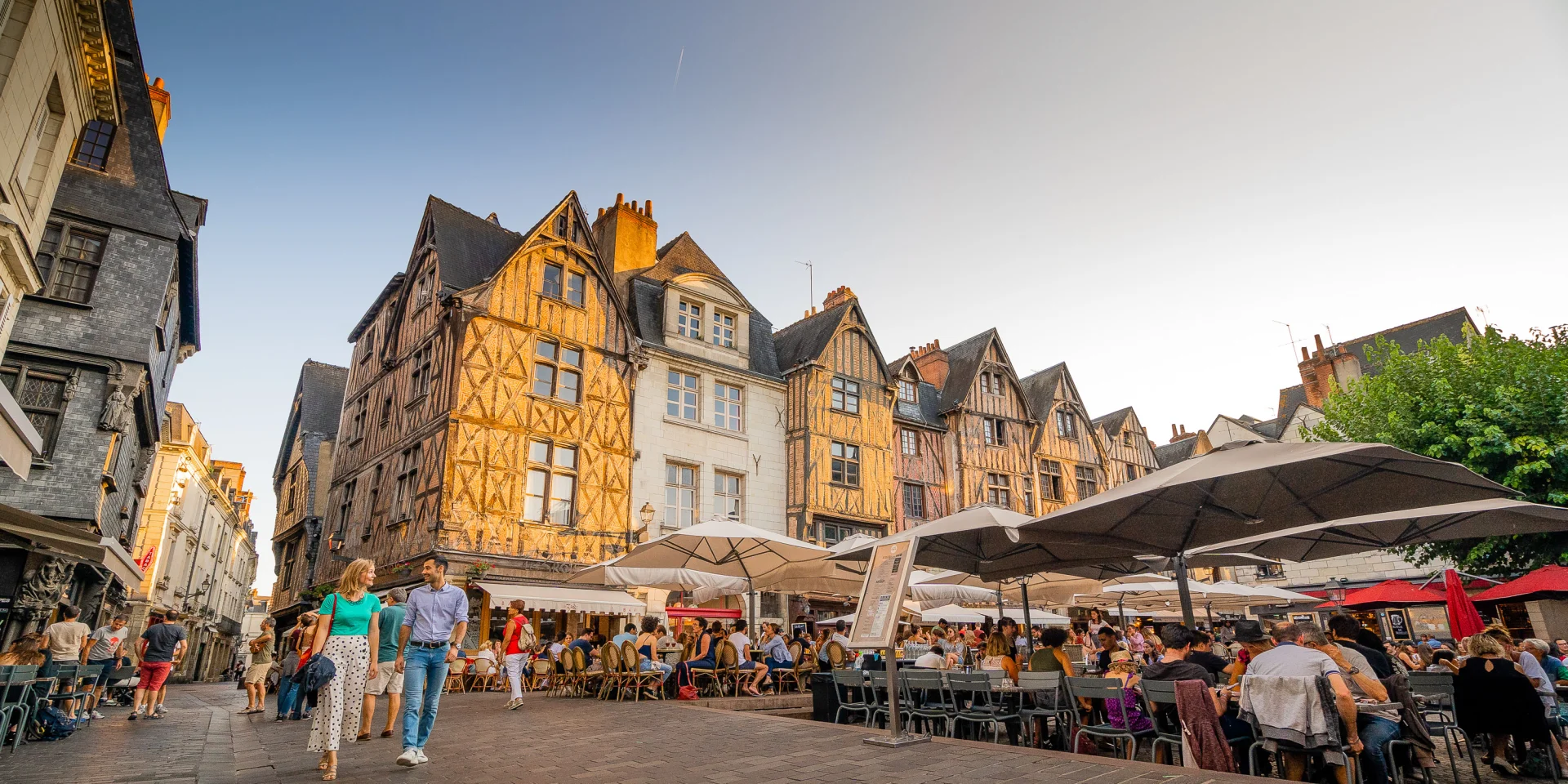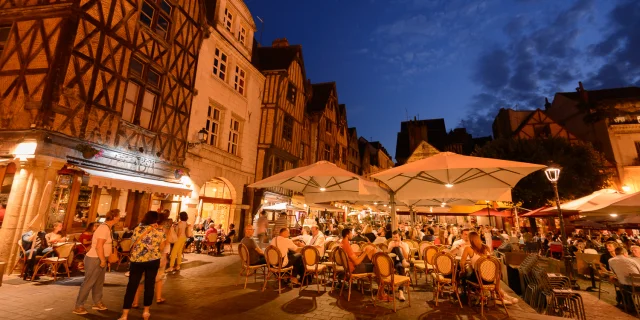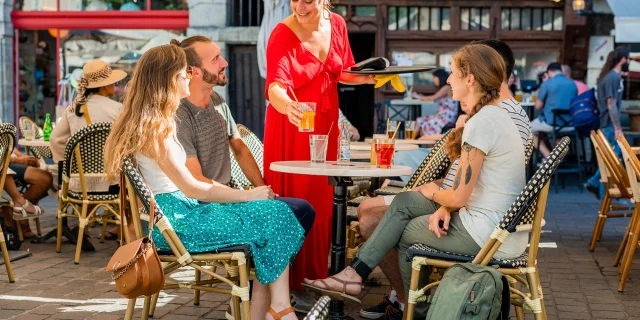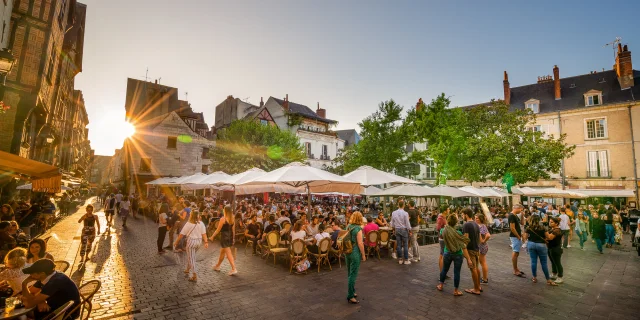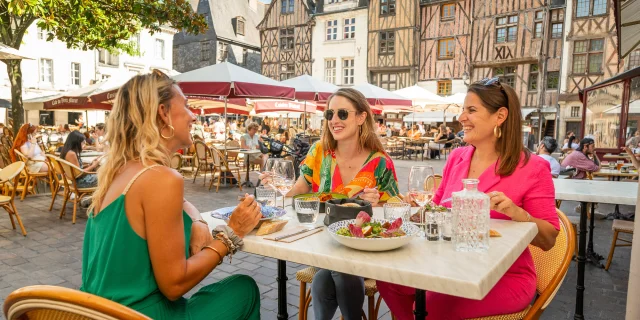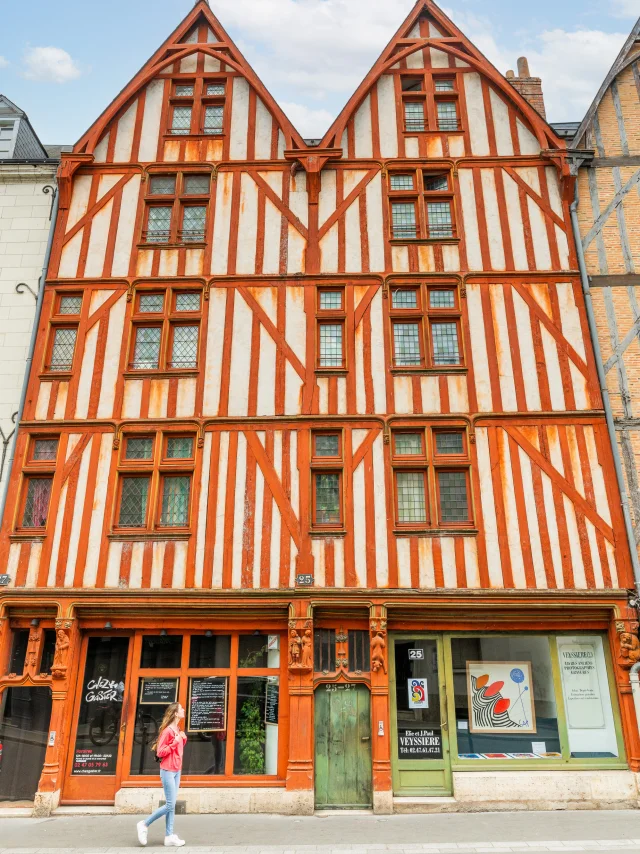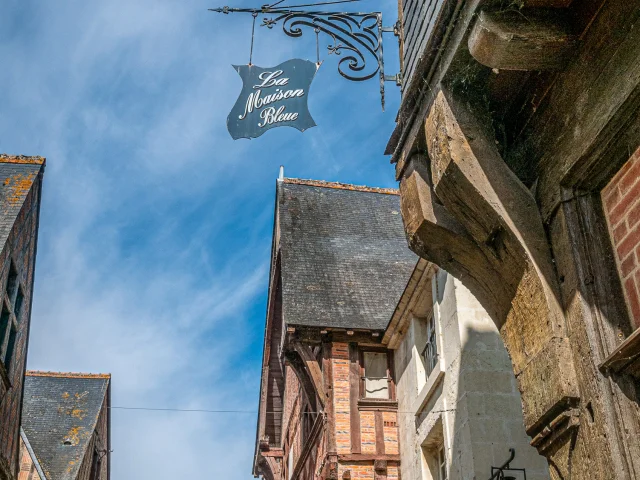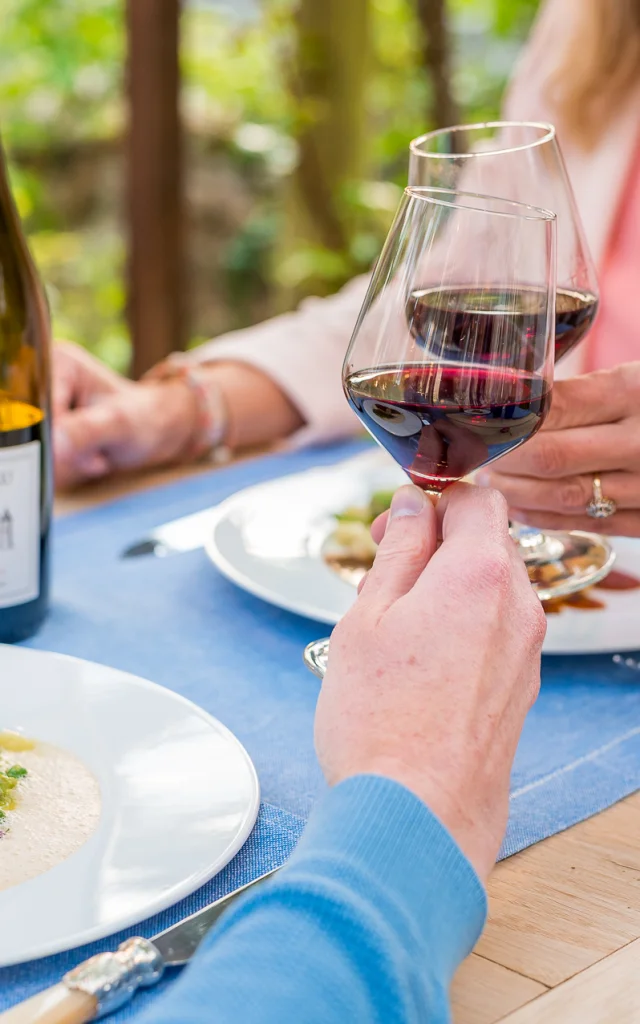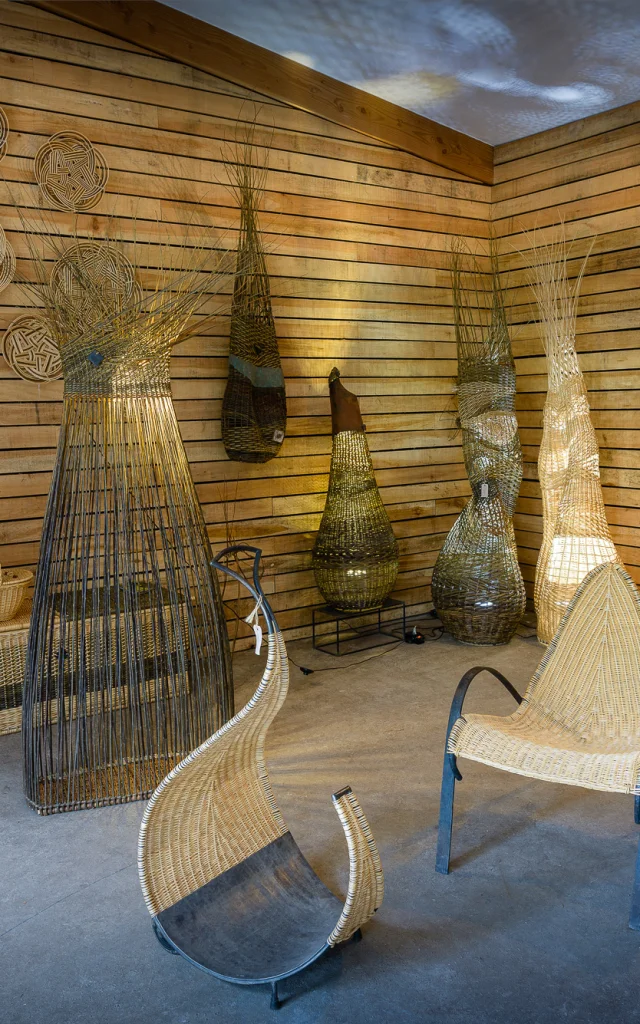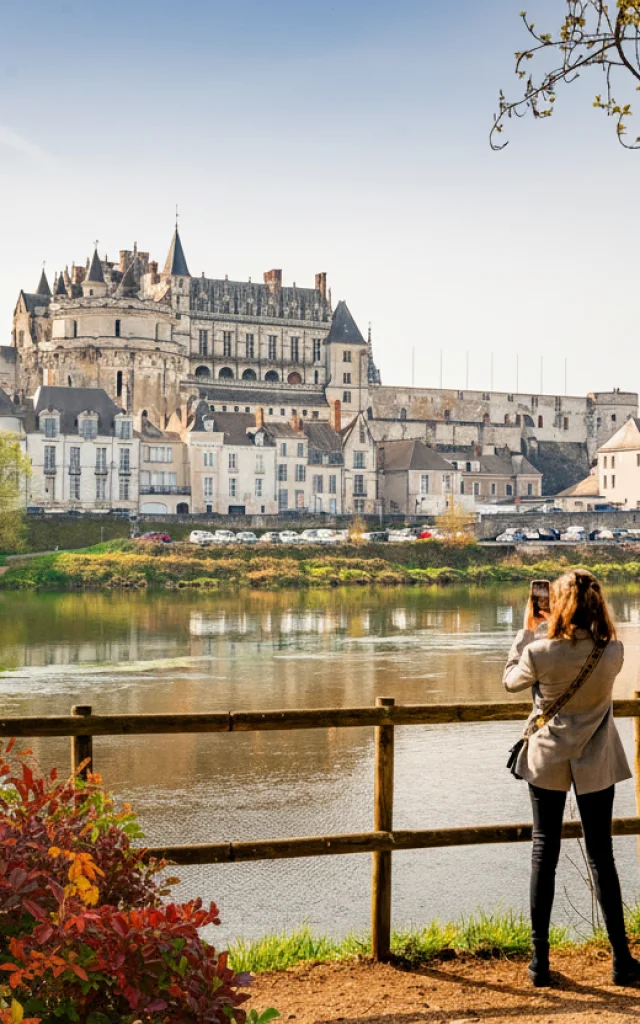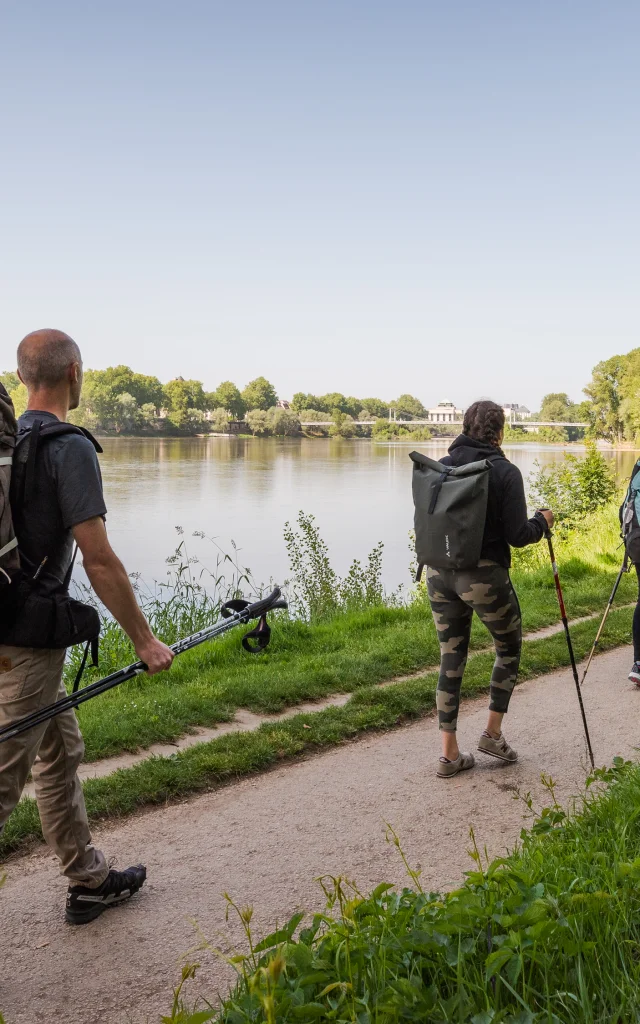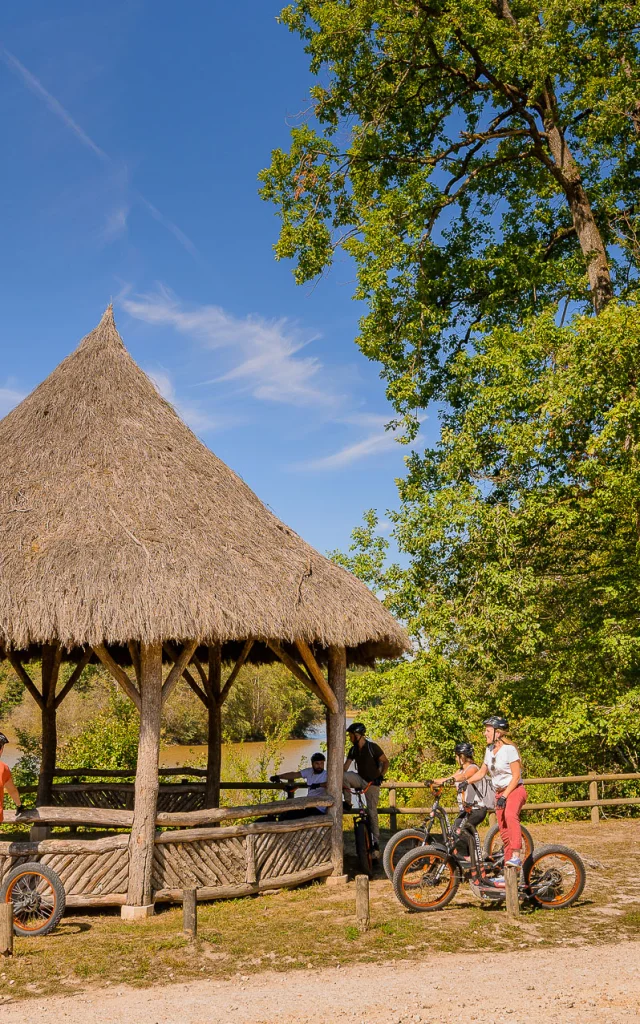An authentic site
In the heart of old Tours, discover the Place Plumereau and its many bars and restaurants, where you can enjoy the charm of several timber-framed houses on the terrace. We owe the preservation of this ensemble to a conservation plan initiated in 1973, based on the Malraux law of 1962, which aimed to protect and enhance France’s historic heritage. A visionary initiative! Below, take a look at some of the half-timbered houses you may come across while strolling through the towns of Touraine. Take a look at this rareslate-clad house, a material used for bourgeois houses.
Guided tour
Don’t hesitate to book the “Vieux Tours” guided tour, offered by the Tours Val de Loire Tourist and Convention Bureau.
 Place Plumereau, Tours
Place Plumereau, Tours